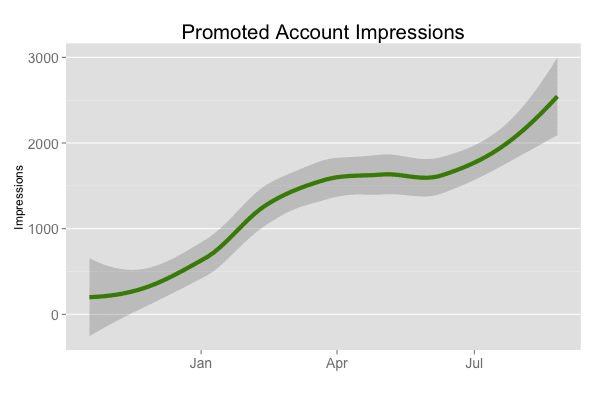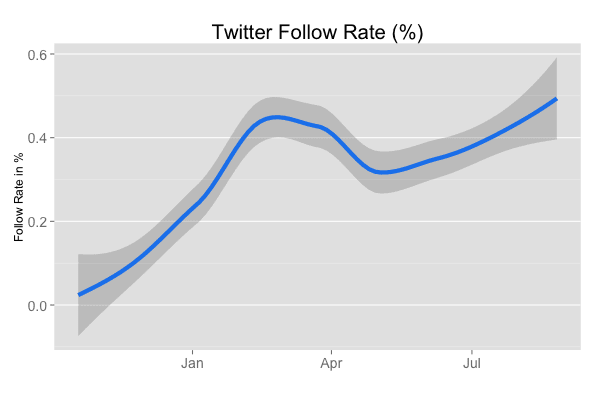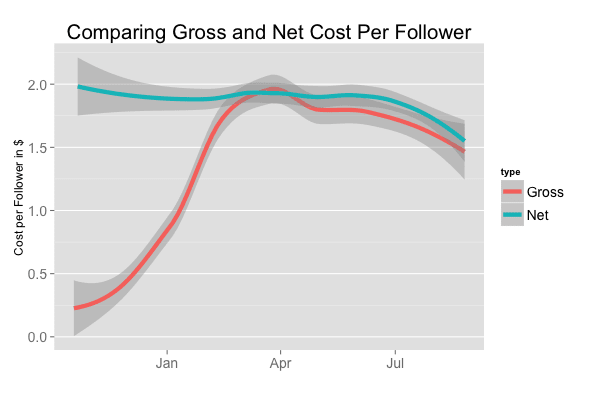I’ve been promoting my Twitter account since October 2012 in effort to better understand social media content marketing and to promote that great vanity metric, Twitter follower count.
At the outset, I promoted my account and links to blog posts. I prize followers more than one time visits to a blog, because the long term marketing relationship provides many chances to bring someone to my blog. Promoting links sends traffic to a single blog post, but doesn’t convert to followers with a very high rate.
I spent $10 per day for 312 days and set my max bid to $2.5 per follower for people in the Bay Area. On average, I spent $9.28 per day to acquire 5.3 followers for an average cost-per-follower (CPF) of $1.73. Below is the detailed data:
New followers are marked in gray and lost followers, those who unfollow me, are marked in red. On average, I gain 5 followers each day and lose 0.15 followers (that I paid to acquire).
The unfollow rate has been increasing dramatically in the past few months from about 0.5% in February to 7.6% in August. This is a worrisome trend because it implies a decrease in targeting effectiveness and an increase in cost per follower (CPF).
The number of impressions for my promoted account has increased by more than 5x since I started using the ads product in late 2012. This is a positive for me. The more people who see my name, the better, provided I don’t have to pay more. But it means that fewer ad impressions generate revenue for Twitter.
Over the same time, the follow rate has improved by about 5x. Because the follower growth rate has remained relatively steady, the data implies that the number impressions required to garner a follower has increased by 5x in just a few months and Twitter is showing a greater number of impressions to the same users, rather than diffusing those impressions over many more users.



